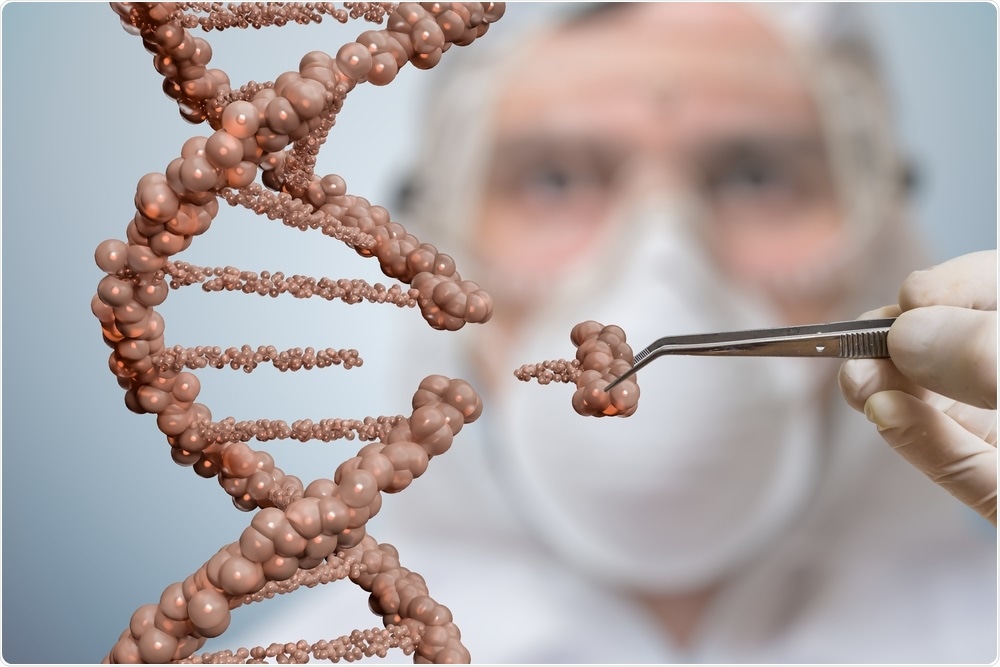CRISPR is a genetic tool that has been compared with molecular scissors for its potential to cut out and substitute the genetic code inside the DNA. However, the CRISPR tool also has a capability that could make it valuable beyond genetic repairs.

CRISPR. Image Credit: vchal/Shutterstock.com
CRISPR can precisely locate specific genes. What we did was attach CRISPR to nanobodies to help it perform specific actions when it reached the right spot on DNA.”
Lacramioara Bintu, Assistant Professor of Bioengineering, Stanford University
Recently, Bintu’s laboratory has used this combination method to change CRISPR from a gene-editing scissor into a nanoscale control agent that can switch on and off particular genes, similar to a light switch, to initiate or stop the flow of certain health-related protein within a cell.
“There are a lot of things you can't fix with scissors,” added Bintu. The innovative method approach explained by her team in the Nature Communications journal could allow scientists to investigate new therapeutic applications in the areas of epigenetics—which is the analysis of how genes act inside the cells.
As Bintu explained, each cell in the human body contains the same DNA—a complete set of genes—but not every gene is turned on in every cell. Genes in a few cells are turned on, informing the cells to create particular proteins. These genes are turned off in other cells but turned on in others. at times, as in the case of genetic disorders, things go awry in this switching mechanism. The new tool developed by Bintu’s laboratory could correct those errors.
The novel tool is more complex than the scissors since regular CRISPR cannot switch genes on or off in a regulated manner without splitting the DNA. To make alterations without causing damage to the DNA, CRISPR requires help from other large and complex proteins, called “effectors.” With the latest combination tool, CRISPR locates the correct gene, allowing the effector to flip the switch.
But these effector molecules are usually too big to easily deliver into a cell for therapeutic use.”
Mike Van, Study First Author and PhD Student, Stanford University
Things become more complicated when many effectors are generally used together to efficiently control the behaviors of specific cells, rendering the CRISPR-effectors combo even larger, and thus more difficult to create and deliver.
To overcome this barrier, Bintu’s research team focused on smaller proteins called nanobodies. Nanobodies do not behave as stand-ins for the effectors but rather behave like minute hooks that capture the required effectors that are already circulating inside the cell. if the right nanobody is selected, the right effector will be recruited for the switching task.
The new approach could be applied to fix epigenetic defects without having to integrate the CRISPR tool with large effectors.
The cells already have these proteins. We thought: Why are we reattaching them? Let's use nanobodies to do that.”
Lacramioara Bintu, Assistant Professor, Bioengineering, Stanford University
At present, the methodology is still at the proof-of-concept stage. The following step is for the researchers to sort through an unlimited number of promising nanobodies and figure out how to bind these nanobodies to CRISPR to target certain epigenetic breakdowns.
“We just came up with a method of testing hundreds of thousands at a time,” concluded Bintu, who intends to further improve this method in upcoming experiments.
Source:
Journal reference:
Van, M. V., et al. (2021) Nanobody-mediated control of gene expression and epigenetic memory. Nature Communications. doi.org/10.1038/s41467-020-20757-1.